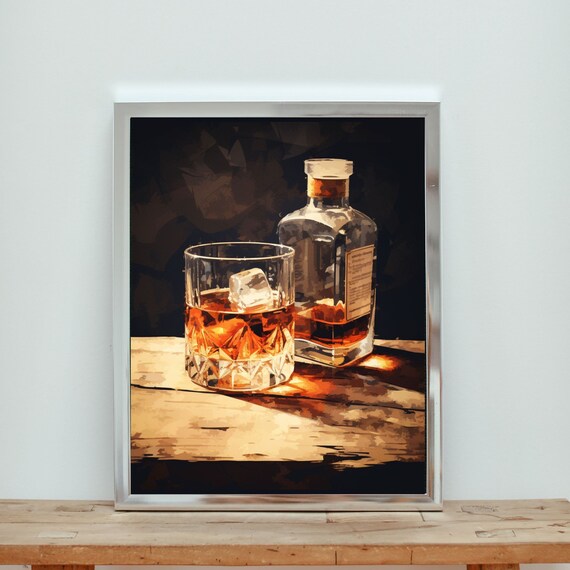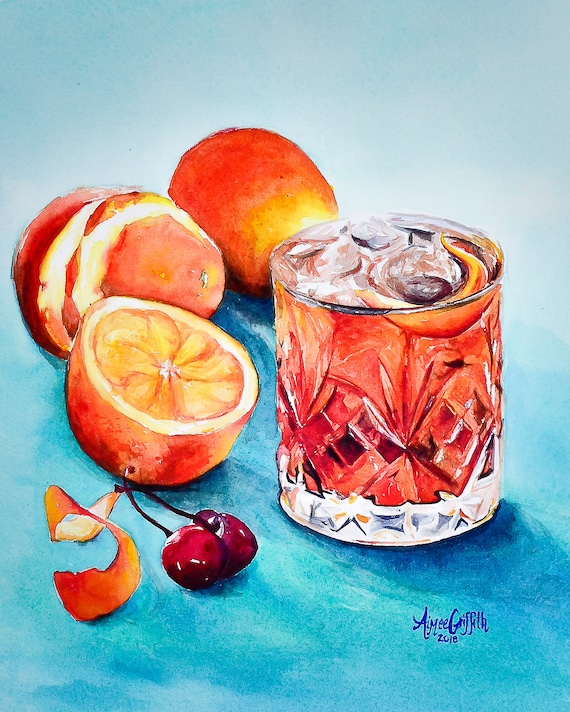Bourbon Art in Contemporary Society: Where Tradition Satisfies Technology
Bourbon Art in Contemporary Society: Where Tradition Satisfies Technology
Blog Article
The Relevance of Whiskey Art in Celebrating Heritage and Workmanship in the Beverage Sector
The detailed partnership in between whiskey art and the event of heritage and workmanship within the drink sector can not be overstated. Through thoughtfully developed tags and containers, bourbon brand names encapsulate their historic roots and the artisanal abilities that specify their manufacturing methods. This imaginative measurement not only enhances market allure yet likewise functions as a conduit for cultural narration, promoting a deeper connection in between the customer and the craft. As we check out the different facets of this topic, interesting questions about the influence of modern-day trends on typical practices emerge, triggering additional assessment.
The Historic Roots of Whiskey
At the heart of whiskey's attraction exists an abundant tapestry of historic roots that map back to ancient worlds. The origins of whiskey can be connected to the purification practices of the Sumerians and Babylonians around 2000 BCE, where early types of fermented grain beverages began to emerge. Nonetheless, it remained in the Middle Ages that the art of distillation evolved dramatically, particularly in Ireland and Scotland, causing the development of whiskey as we understand it today.
The term "scotch" itself originates from the Gaelic word "uisce beatha," indicating "water of life." This phrase emphasizes the social relevance of whiskey in Celtic societies, where it was frequently connected with rituals, events, and public bonding. By the 15th century, distillation ended up being a recognized craft within reclusive communities, leading the way for the facility of legal distilleries.
As profession paths expanded, whiskey's popularity grew, transcending local borders and recording the interest of connoisseurs worldwide. Limited Edition. This historical trip mirrors not just the craftsmanship behind whiskey manufacturing however also its indispensable duty in social and social contexts, marking it as a significant beverage throughout history
Artistic Expression in Branding
Scotch branding stands as a compelling junction of virtuosity and commerce, where visual identification plays a critical duty in shaping consumer understanding. The aesthetic appeals of whiskey labels, packaging, and advertising and marketing products show not just the brand's tale but also its core values and heritage. Through artistic expression, distilleries convey a narrative that resonates with consumers, stimulating feelings and sparking connections.
The usage of shade, typography, and imagery in branding serves to set apart products in a saturated market. As an example, conventional motifs may evoke a feeling of authenticity and craftsmanship, while modern-day designs can symbolize technology and forward-thinking. This strategic artistic direction enhances brand acknowledgment and commitment, enabling consumers to build a personal connection with the bourbon they choose.
Additionally, artistic expression in branding often works as an event of local heritage. Distilleries frequently incorporate local symbols or historic recommendations into their layouts, developing a local color that welcomes consumers to take part in a broader cultural experience. Inevitably, the creativity behind bourbon branding not just boosts visual appeal but additionally enriches the total narrative of the brand, promoting a deeper recognition for the workmanship and heritage ingrained in each container.
Craftsmanship in Container Design
The creativity apparent in scotch branding prolongs past aesthetic identification to include the craftsmanship included in container layout. Each bottle works as a vessel not just for the spirit within, however also for the story it informs regarding its custom, beginning, and quality. The layout procedure requires meticulous attention to information, as components such as product, shape, and closure add significantly to the overall understanding of the bourbon.
Craftsmanship in bottle layout includes selecting high-quality glass that can boost the whiskey's color and clearness, while additionally offering a responsive experience for the consumer. The silhouette of the container must be both cosmetically enticing and practical, frequently mirroring the heritage of the brand name. Numerous distilleries choose for unique shapes or embossed logo designs that evoke a feeling of authenticity and background.
Moreover, the label design and typography play a vital duty in interacting the brand's story. Whiskey Art. A well-crafted bottle not just captivates the consumer's eye however also strengthens the brand's dedication to quality and tradition. This way, the craftsmanship of bottle style ends up being an essential element of the bourbon experience, merging virtuosity with a profound respect for heritage
Social Importance of Bourbon Art
Celebrating practice and craftsmanship, the social relevance of bourbon art goes beyond plain visual appeals, intertwining with click the social and historical stories of the regions from which it comes from. Each bottle offers as a canvas, portraying the unique stories, folklore, and customs that have actually formed neighborhood whiskey-making practices. The detailed designs frequently mirror the heritage of the distillers, incorporating symbols and themes that resonate with the society and values of their areas.
On top of that, whiskey art plays a vital role in common events and celebrations, working as a substantial web link in between individuals and their shared experiences. By appreciating the creativity in whiskey packaging, consumers cultivate a deeper understanding and respect for the craft, inevitably enriching their pleasure of the drink itself.
Modern Trends in Whiskey Presentation
Over the last few years, the presentation of bourbon has actually developed to mirror contemporary preferences and fads while still Web Site honoring typical workmanship - Realism Art. Distilleries are progressively concentrating on visual elements that enhance the overall drinking experience, bridging the space in between heritage click this site and modernity
Innovative bottle layouts have emerged, typically integrating lasting products and imaginative tags that tell compelling stories. Numerous brands currently collaborate with neighborhood musicians, infusing their products with one-of-a-kind aesthetic expressions that resonate with customers. Furthermore, limited-edition releases are often packaged in collectible containers, adding value and appeal for lovers.

Verdict
In conclusion, bourbon art serves as an essential channel for expressing the heritage and workmanship inherent in the drink sector. With intricate branding, cutting-edge container designs, and culturally substantial creative components, scotch brand names effectively honor their traditions and connect with customers.


Craftsmanship in container design entails selecting high-grade glass that can enhance the bourbon's color and clarity, while also supplying a tactile experience for the customer. In this way, the workmanship of container layout comes to be an essential facet of the whiskey experience, combining virtuosity with an extensive respect for heritage.
In final thought, bourbon art serves as an essential channel for revealing the heritage and workmanship inherent in the beverage market.
Report this page